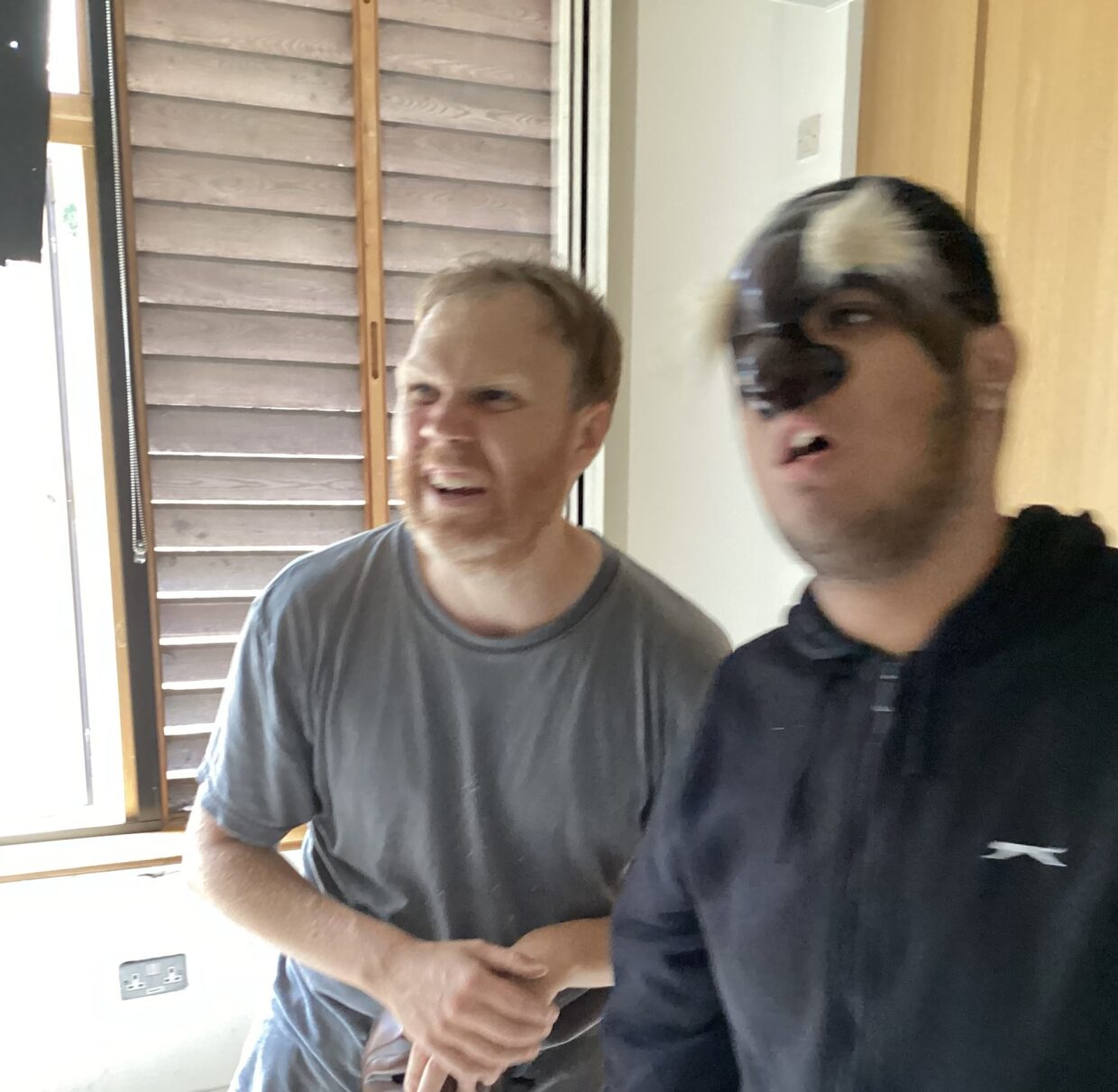I was lucky enough to be invited to offer mask workshops at Treehouse School in north London. In June this year I gave classes to students and a training to staff, and the unofficial title was Masks and Ways of Seeing. That was how I understood the research we were about to do.
I’m interested in what putting a mask on does to perception. For me, masks have been equivalent in their power to psylocibin, LSD or DMT. I have my explanations for this, which are mostly rooted in social self consciousness — the work my brain needs to do to police how my face is perceived in a social setting is no longer required — and attention goes elsewhere. This is the ‘covering up’ part of wearing a mask. There is also something to do with how you are perceived in the mask and here the mask itself becomes more important.
From a theatrical point of view, masks like the larval and the neutral mask are used in actor training partly because they make it impossible to be expressive using the muscles of the face. Then the body must do the work of expressing and this is an essential skill for stage actors to learn.
But I am also interested in these phenomena as they relate to neurotype and the categories and experience of being neurotypical or autistic or neurospicy in some other way. My idea is that masks may help autistic people to behave in ways that may be considered neurotypical (eg making eye contact; standing still while being perceived; perhaps releasing tension in the body). But they may also offer all people ways of seeing that might typically fall outside of their usual experience and which they may associate with their diagnostic or identity determined/ing neurotype.
Anyway, forget all of that.
On the day we began with a warm-up — music, warming the body from the feet up to the knees and shaking those butts, oh yes, we don’t forget the butt. The entire body, the students coming into the room one by one, introductions one-on-one from me to them; still the dance continues, we move our bodies to the music; find pleasure; let’s find the ground. You know. The students’ helpers getting into it. Yum.
Then the masks come and students choose one. They have some time, they can put it on; maybe we start to find the sound of the mask. or the movement. Maybe working in pairs with a helper. The students find a sound — or they find pleasure in just sitting or standing with the mask. Moving round the room. Another dance in the mask. Dancing with a partner.
Later there are opportunities for looking at everyone else in the room through a mask. How does this differ from performance? The one on stage, of course, is the one looking at the audience. So maybe it only differs in how we call it.
For one group, we placed a red foam square on the floor in the middle of the room, made a circle, and each child was invited to stand on the square, with a mask, and do one full turn, looking at each person in the room. Wonderful. Some students making eye contact, giving curiousity where they might not have before. Or maybe that was me wishing my hypothesis correct.
Well, some students also got on really well with their masks. Especially in the second group, three students had significant performative moments in the larval masks I’d brought with me. Rounds of applause of course.
For the staff. An offer of an experience. Leading by the finger round the room. Eyes closed leading. And later masks, in pairs, finding the masks gesture, their posture. And finally, two performances, one in a larval mask, one in a chicken mask. The staff really got into it.
Next time: no red noses (one was lost); some more care with the staff mask work; a longer playlist.
Outcomes: positive experiences for students, I’m delighted with how it went; Moments of connection and joy which staff said were touching and special.
